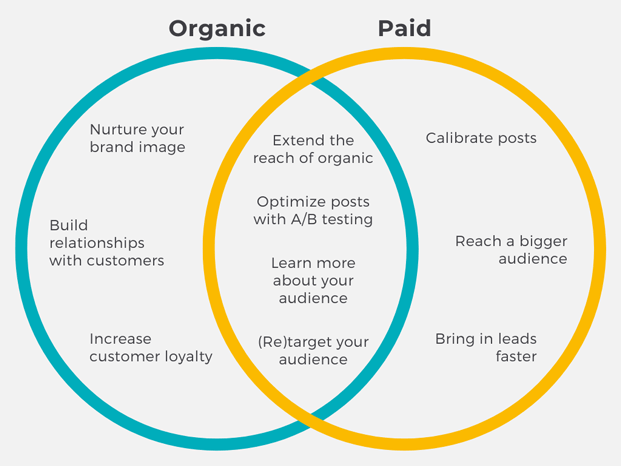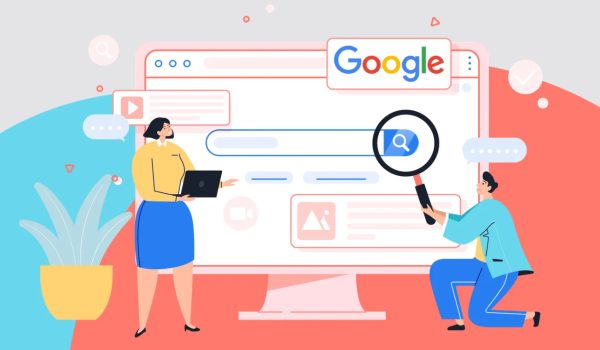
Social media is a great place to market just about any brand, and there are different ways to go about it. Devising an effective social media strategy isn’t about choosing one or the other, however, but rather how best to blend the two.
That’s because paid social and organic social serve two different purposes. They reach audiences in different ways and each require a different approach. Both are important and both can help to grow your business, especially when used in harmony with each other. Let’s explore how, starting with…
Why you need organic social media
Organic posts on your social media are indispensable because you can:
1. Nurture your brand image
You need organic social to nurture your brand image, to establish and/or reaffirm your brand’s look and feel, tone of voice, and overall personality. It’s also an opportunity to express your brand message and values – all without an ad budget!
2. Build relationships with customers
Organic social also offers a chance to connect with customers in a meaningful way and build lasting relationships with them. By sharing content that interests them, you can turn them into a devoted audience that will even do your marketing for you by liking and sharing.
3. Increase customer loyalty
That audience loyalty flows naturally into customer loyalty. Organic posts that gain traction with the right audience will bring new leads to your sales funnel and ultimately convert.
Why you need paid social media
But organic social media has a drawback: gaining traction takes time (sometimes a long time) because your audience needs to find your page. But paid social can be used to boost organic growth in different ways. It’s important to use paid in addition to organic because with social media advertising you can:
4. Calibrate posts
With paid social, you can hone in on your ideal audience by calibrating your posts to determine who sees them and when. Factors like location, age and personal interests will help you narrow the field and avoid wasting ad spend showing ads to people who just aren’t interested.
5. Reach a bigger audience
You can reach a much bigger audience far more with paid social media posts. Once you’ve calibrated your ads to reach the right kind of people, you can scale it up to reach more of them by simply increasing your budget.
6. Bring in leads faster
With paid media on social, you can hit your sales targets more quickly by bringing in high value leads at a more rapid rate. If you have a limited time offer or a short-lived campaign, this is especially important.
Why you need a hybrid social media strategy

But paid social does require an ad budget which needs to be spent with care. The best way to maximize the value of that spend is by applying the lessons gleamed from your organic content. So it’s not a case of paid vs. organic social, but of paid + organic social. By having a hybrid strategy, you can:
7. Extend the reach of organic
You can extend the reach of organic content by amplifying it with a budget, thus casting a wider net for an inbound marketing strategy.
8. Optimize posts with A/B testing
You can optimize your posts with A/B testing, using your organic content as a testing ground. See what posts perform best without a budget, and promote what works over what doesn’t.
9. Gain a deeper understanding of audience metrics
You can learn more about your audience by looking at who engages with your organic posts and why, then use that information to calibrate your paid ads.
10. (Re)target your audience
You can retarget the audience of your organic content with paid promotions that build on their positive experiences with your brand and push them to convert.
From finding your ideal customers to boosting your best content, the combination of paid and organic social media delivers the best return on investment. Paid and organic social media marketing requires different skill sets, but they complement each other neatly. The key is to find a balance that works best for your business.
That’s something we at CODESM can help you do, so get in touch.





